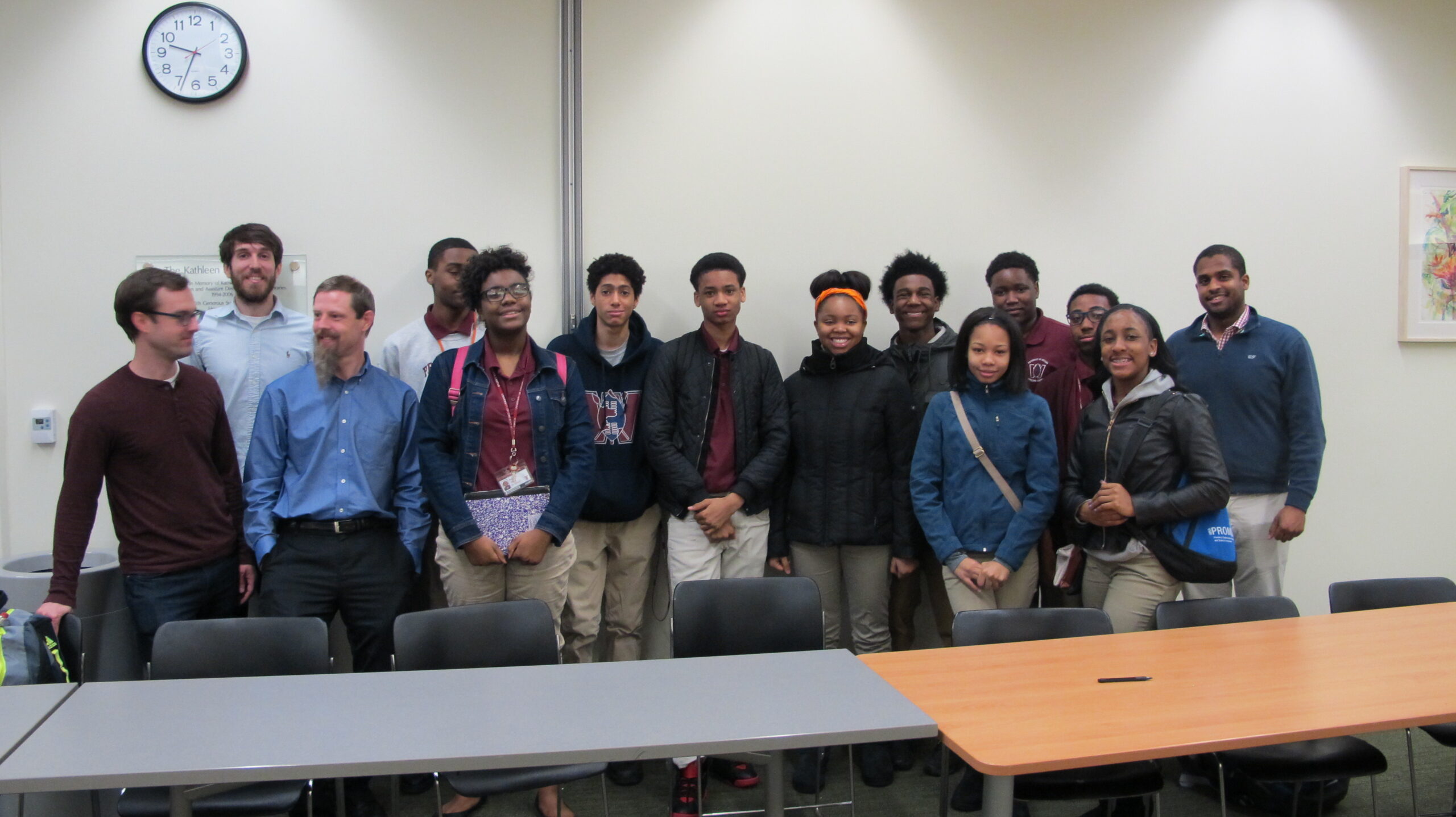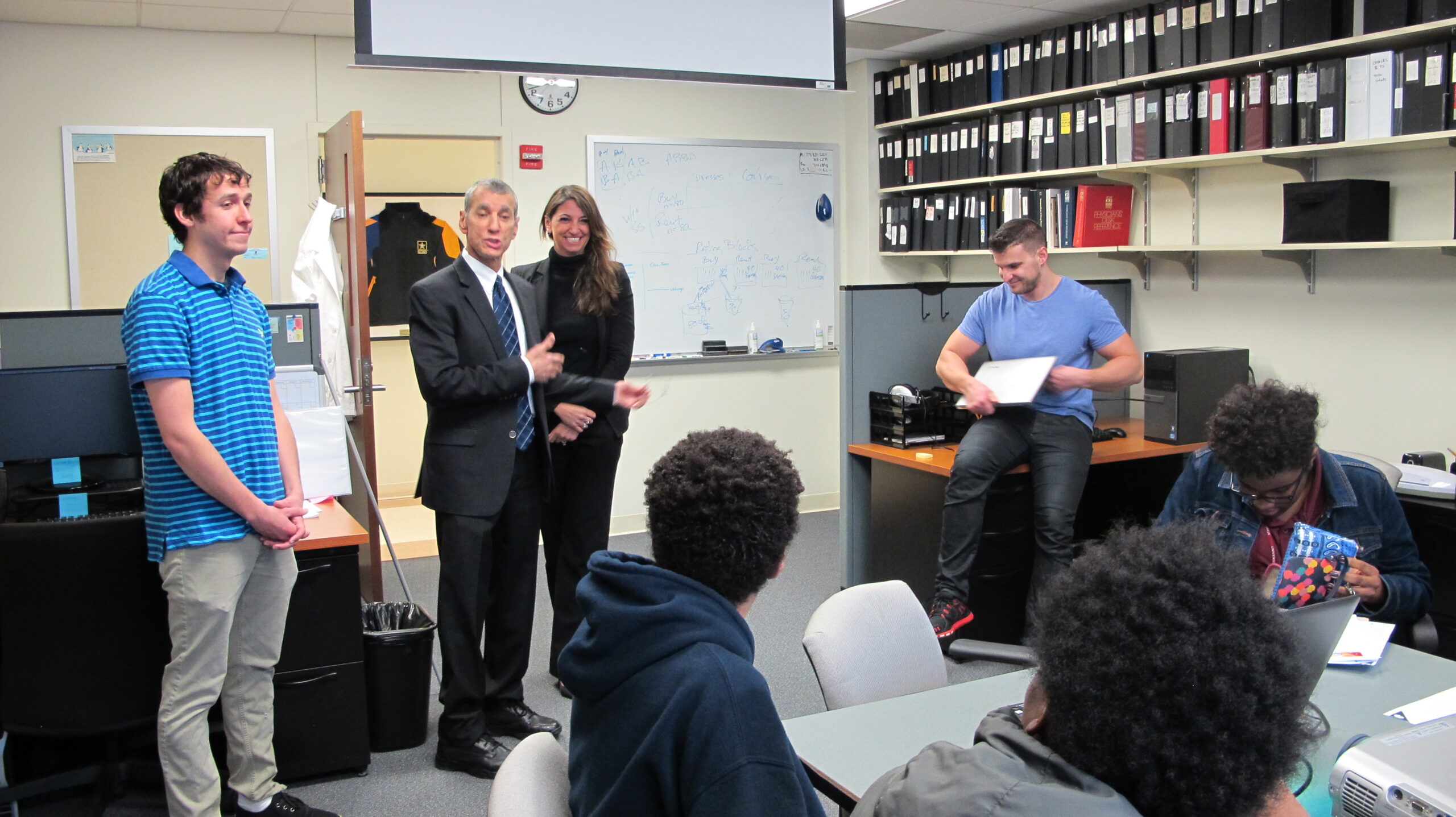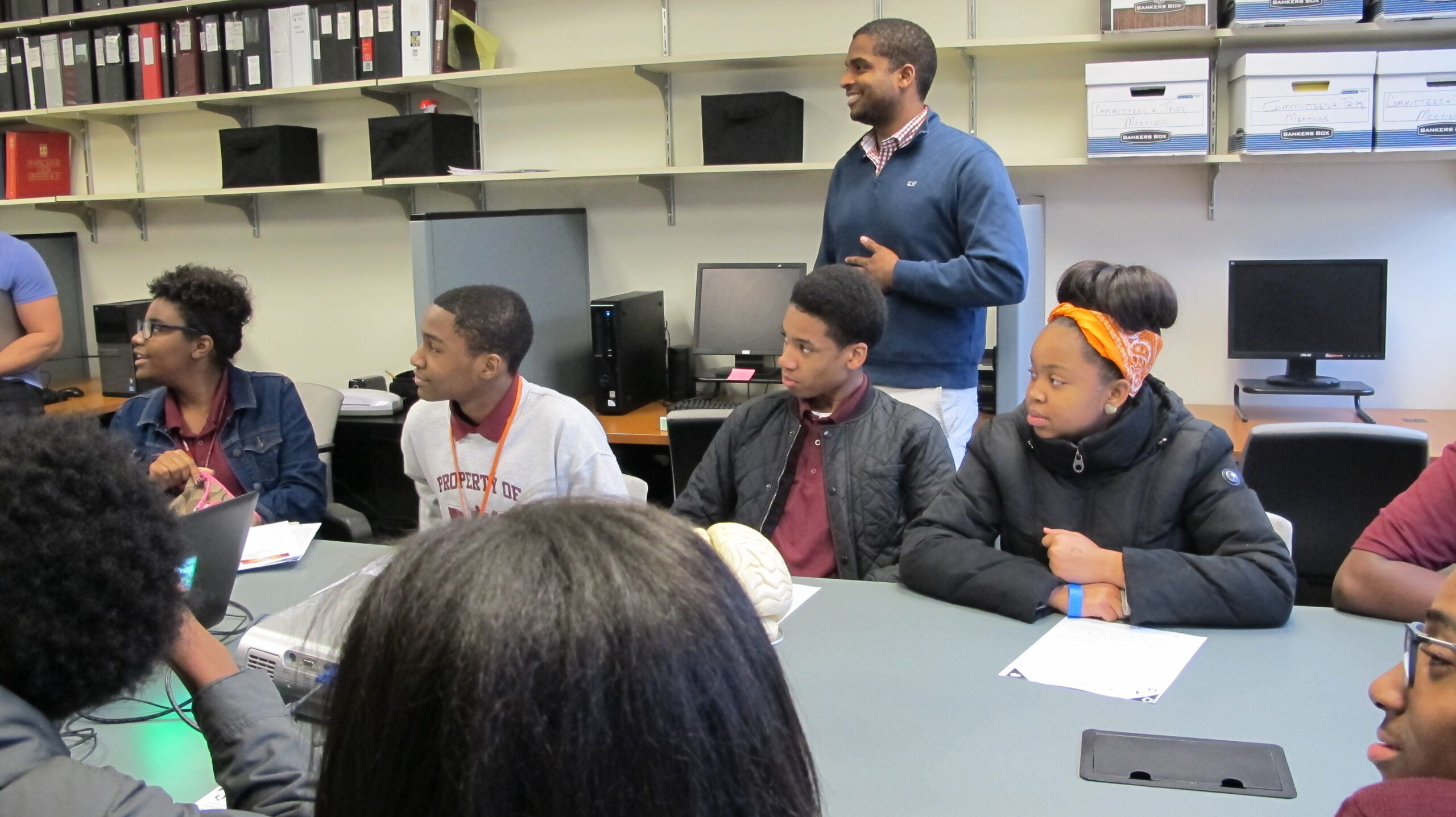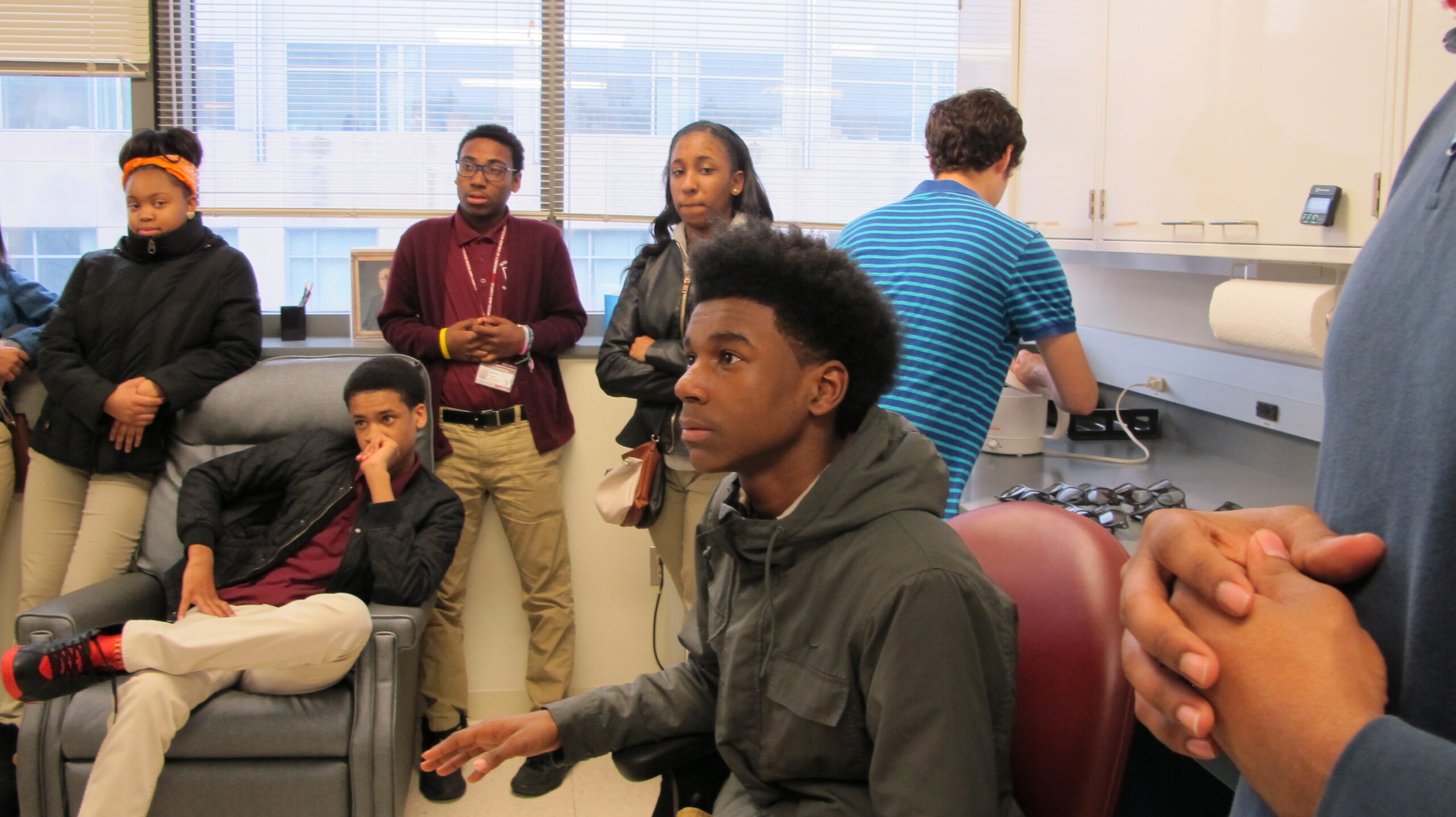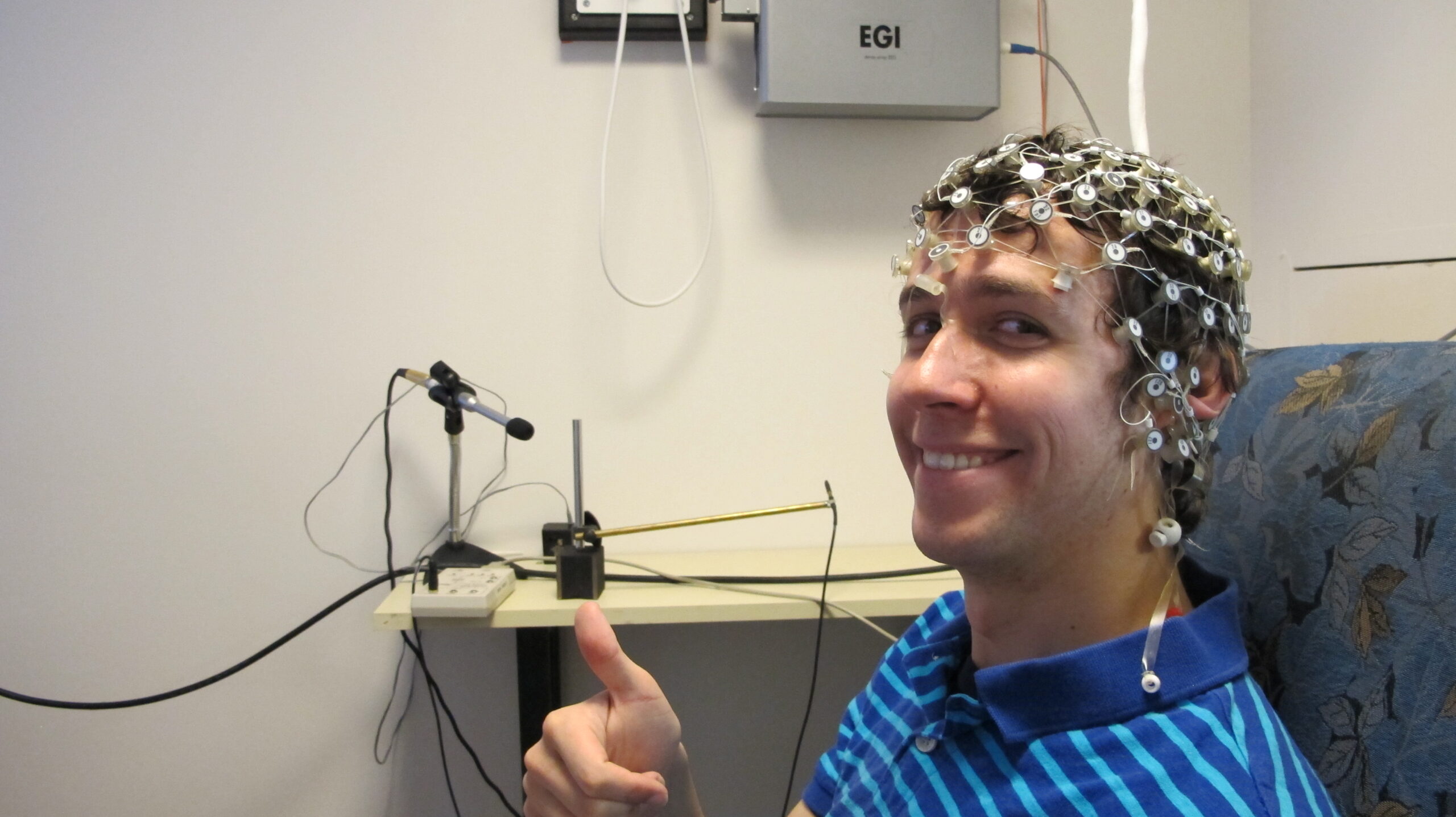| Group 1 |
Group 2 |
| High Performance Electrical NeuroImaging Laboratory (HPEN) |
Zar Room in the John Crerar Library |
| Introduction by John Cacioppo and Stephanie Cacioppo |
Introduction by Jeff Tharsen, a digital humanities computing consultant with the Research Computing Center. |
| Second-year graduate student Elliot Layden expounded further: unlike a computer, in which memory is stored as zeros or ones, synapses can hold many states at once. But even of each synapse was limited to a zero or one, the human brain could hold about 105 TB of data. |
Dr. H. Birali Runesha, director of RCC and assistant vice-president for research computing, showed the interior of a computing node, similar to the ones used on Midway. |
| Elliot Layden gave the students an overview of the many imaging technologies used to study brains—MRI, functional MRI, diffusion MRI, and voxel-based morphometry (VBM). |
RCC student worker Matt Best showed off actual brains, human and rhesus, preserved in formaldehyde. He also discussed his own research, on how the brain controls arm movements. |
| To show students how an EEG is done, fifth-year graduate student Ivo Gyurovski fitted Elliot Layden with a net of electrodes. Then everyone gathered around Gyurovski’s computer, where they could see Layden’s brain waves spiking as he blinked, moved his eyes, and ground his teeth. |
Brian Keating, an image analysis and data visualization consultant, demonstrated to students how computation makes studying the brain possible. |
| Zar Room in the John Crerar Library |
HPEN |
| Introduction by Jeff Tharsen, a digital humanities computing consultant with the Research Computing Center. |
Introduction by John Cacioppo and Stephanie Cacioppo |
| Dr. H. Birali Runesha, director of RCC and assistant vice-president for research computing, showed the interior of a computing node, similar to the ones used on Midway. |
Second-year graduate student Elliot Layden expounded further: unlike a computer, in which memory is stored as zeros or ones, synapses can hold many states at once. But even of each synapse was limited to a zero or one, the human brain could hold about 105 TB of data. |
| RCC student worker Matt Best showed off actual brains, human and rhesus, preserved in formaldehyde. He also discussed his own research, on how the brain controls arm movements. |
Elliot Layden gave the students an overview of the many imaging technologies used to study brains—MRI, functional MRI, diffusion MRI, and voxel-based morphometry (VBM). |
| Brian Keating, an image analysis and data visualization consultant, demonstrated to students how computation makes studying the brain possible. |
To show students how an EEG is done, fifth-year graduate student Ivo Gyurovski fitted Elliot Layden with a net of electrodes. Then everyone gathered around Gyurovski’s computer, where they could see Layden’s brain waves spiking as he blinked, moved his eyes, and ground his teeth. |
| Zar Room in the John Crerar Library |
Zar Room in the John Crerar Library |
| Pizza lunch |
Pizza lunch |


